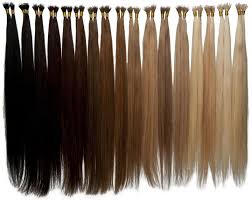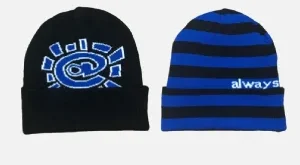The popularity of raw Indian hair bundles has skyrocketed in recent years, thanks to their natural texture, durability, and versatility. However, with the increasing demand comes the proliferation of counterfeit or low-quality products in the market. For consumers looking to invest in high-quality raw Indian hair, it’s essential to know how to identify genuine bundles amidst the numerous options available. This blog will provide you with key tips and insights on how to spot authentic raw Indian hair bundles and avoid falling victim to counterfeit products.
Understanding What Raw Indian Hair Is
Before delving into how to identify genuine raw Indian hair bundles, it’s important to understand what raw Indian hair actually is. Raw Indian hair refers to hair that has not undergone any chemical processing or treatment. This means that the hair is in its most natural state, maintaining the original texture, cuticle alignment, and quality. Raw Indian hair is usually sourced directly from donors in India, often through temple donations or direct purchases.
1. Examine the Hair’s Texture and Appearance
One of the most distinguishing features of genuine raw Indian hair bundles is the texture and appearance of the hair. Since raw Indian hair is unprocessed, it retains its natural texture, which can range from straight to wavy to curly. The hair should look and feel natural, with a slight variation in texture and wave pattern, which is a hallmark of hair collected from a single donor.
- Natural Shine: Authentic raw Indian hair has a natural shine that is neither too glossy nor too dull. The shine is a result of the intact cuticles that reflect light, giving the hair a healthy, vibrant appearance. Be cautious of hair that appears overly shiny, as this could be a sign of silicone coating, which is often used to make lower-quality hair appear more lustrous.
- Texture Consistency: While raw Indian hair can have variations in texture due to its natural state, the overall feel of the hair should be consistent throughout the bundle. Run your fingers through the hair—genuine raw Indian hair will feel smooth and soft, with minimal tangling.
- Wave Pattern: The wave pattern of raw Indian hair is usually natural and ununiform, which is a sign of authenticity. If the hair has a perfect, uniform curl or wave pattern, it may have been processed or manipulated, which means it is not raw.
2. Check for Cuticle Alignment
Cuticle alignment is a crucial factor in determining the authenticity of raw Indian hair bundles. The cuticles are the outermost layer of the hair shaft, and in genuine raw hair, they are all aligned in the same direction from root to tip. This alignment helps prevent tangling and matting, ensuring the hair remains smooth and manageable.
- Tangle-Free: When the cuticles are aligned correctly, the hair should not tangle easily. Run your fingers through the hair or use a wide-tooth comb to check for tangling. If the hair tangles excessively, it may be a sign that the cuticles are not aligned, indicating that the hair is not raw or has been chemically treated.
- Shed Test: Gently pull on a few strands of hair. Genuine raw Indian hair will have minimal shedding due to the intact cuticles. Excessive shedding could indicate poor quality or processed hair.
- Water Test: Another way to check for cuticle alignment is by performing a water test. Wet the hair and observe how it reacts. Authentic raw Indian hair with aligned cuticles should become slightly wavy or curly when wet, and the strands should not stick together. If the hair becomes excessively frizzy or tangles when wet, it may not be genuine raw hair.
3. Look for Natural Color Variation
Raw Indian hair bundles typically come in natural shades of black and dark brown. One of the telltale signs of authenticity is the slight variation in color throughout the bundle. This is because natural hair from a single donor is unlikely to be a uniform color; it may have lighter or darker strands mixed in.
- Natural Undertones: Genuine raw Indian hair often has natural undertones of red or gold, especially in sunlight. This is due to the natural pigments in the hair and is a good indicator of authenticity.
- Color Consistency: Be cautious of hair that appears to be a uniform jet black or other unnatural colors. This could indicate that the hair has been dyed or chemically treated, which means it is not raw.
- Bleach Test: Raw Indian hair can be colored or bleached easily due to its natural state. If you are unsure about the authenticity of the hair, consider doing a small bleach test on a few strands. Genuine raw hair should lift in color relatively easily and evenly, while processed hair may not react well to bleach.
4. Assess the Smell of the Hair
The smell of the hair can be a strong indicator of its authenticity. Raw Indian hair should have a neutral or mild natural smell, similar to clean hair. If the hair has a strong chemical odor, it may have been processed or treated with chemicals, which means it is not raw.
- Chemical Odors: Be wary of hair that has a strong chemical smell, as this is often a sign that the hair has been treated with chemicals to alter its texture or color. This could indicate that the hair is not genuine raw Indian hair.
- Smoke Test: Some buyers conduct a burn test on a small section of hair to check for authenticity. Genuine raw Indian hair will burn slowly and produce ash, with a smell similar to burning natural hair. Synthetic or chemically treated hair will melt quickly and emit a plastic-like odor.
5. Evaluate the Weft Construction
The construction of the weft (the stitching that holds the hair strands together) is another factor to consider when determining the authenticity of raw Indian hair bundles. High-quality raw Indian hair will have well-constructed wefts that are durable and prevent shedding.
- Strong Wefts: The wefts should be tightly stitched and reinforced to ensure the hair stays in place. Loose or poorly constructed wefts can lead to excessive shedding and reduced durability.
- Minimal Shedding: While some shedding is normal, especially with raw hair, it should be minimal. Run your fingers through the hair and check for loose strands. Excessive shedding may indicate that the wefts are not well-constructed or that the hair is of lower quality.
6. Research the Supplier
Finally, one of the most important steps in identifying genuine raw Indian hair bundles is to research the supplier. Reputable suppliers should have a track record of providing high-quality raw Indian hair and should be transparent about their sourcing and manufacturing processes.
- Customer Reviews: Look for reviews and testimonials from other customers who have purchased hair from the supplier. Positive feedback from satisfied customers is a good indicator of the supplier’s credibility.
- Sourcing Information: Reputable suppliers should provide information about how their hair is sourced. Ethical sourcing practices, such as collecting hair from temple donations or direct donors, are a good sign of authenticity.
- Return Policy: A trustworthy supplier will have a clear return or exchange policy. This shows confidence in the quality of their products and provides you with protection in case you are not satisfied with your purchase.
Conclusion
Identifying genuine raw Indian hair bundles in the market requires a careful examination of the hair’s texture, cuticle alignment, color, smell, and weft construction. By being aware of these factors and conducting thorough research on the supplier, you can confidently purchase authentic raw Indian hair that meets your expectations. Investing in genuine raw Indian hair bundles not only ensures you get a high-quality product but also provides you with the versatility and longevity needed to achieve beautiful, natural-looking hairstyles.
 Personal Finance and Attractive Interest Rates Unlock Smart Savings with Low Rates and Expert Financial Tips
Personal Finance and Attractive Interest Rates Unlock Smart Savings with Low Rates and Expert Financial Tips







